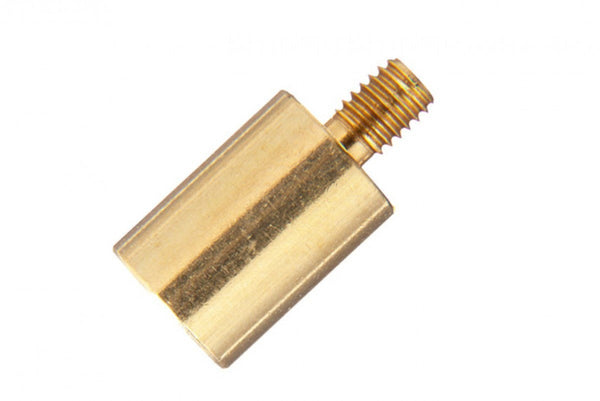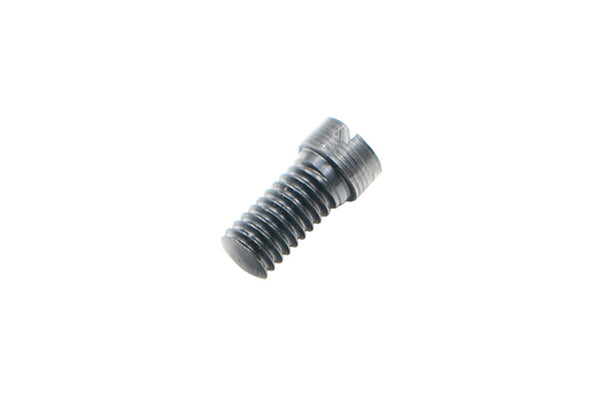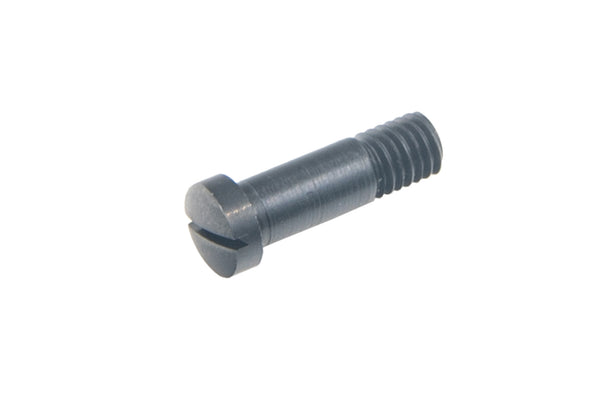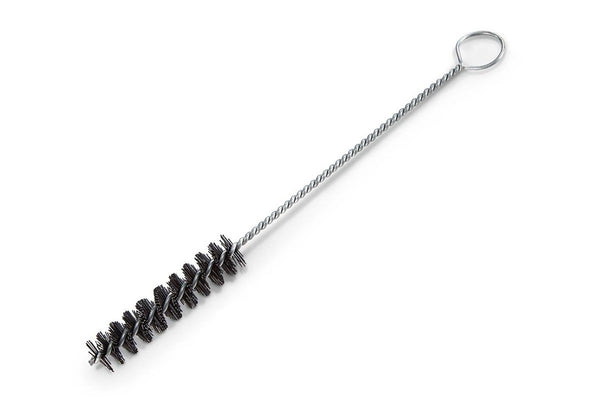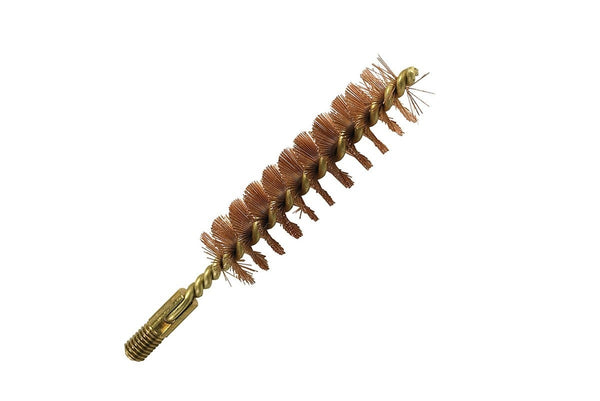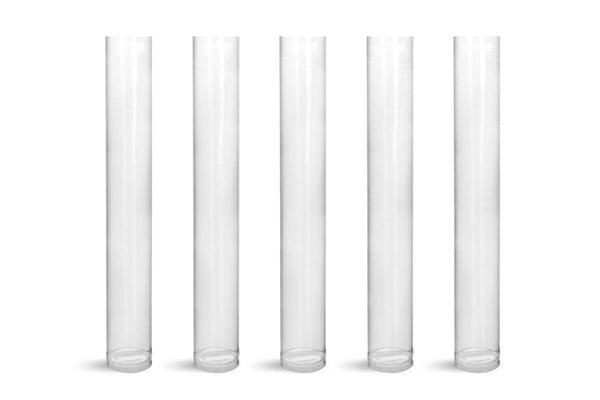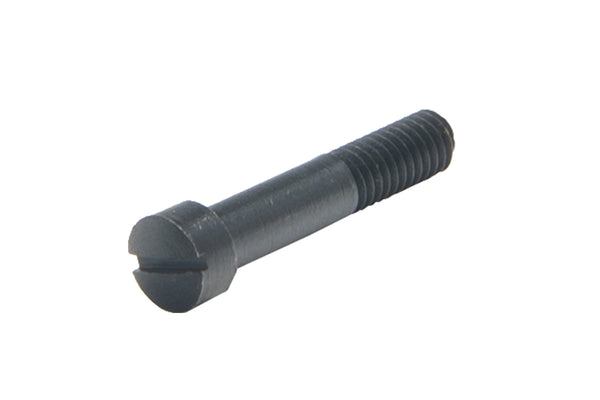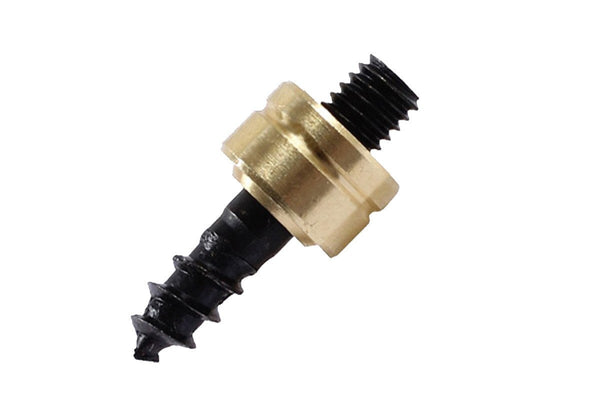Call 1(855) 236-5000

 >
>

Muzzleloader Terms & Glossary
Here are some terms and definitions related to both old and new muzzleloaders:
Muzzleloaders
Muzzleloader – A muzzleloader is a rifled firearm that has the projectile loaded into the muzzle or forward open end of the gun barrel. Rifling means that the barrel has grooves cut into it in a spiral pattern that spin the bullet to stabilize it better. The muzzleloader is distinct from modern rifles, which are typically breech-loading firearms. Muzzleloaders are also referred to as black powder rifles, since they generally use black powder in contrast to the smokeless powders used in regular gun ammunition.
Smokepole – Another name for a muzzleloader. The term references the way a muzzleloader spews out a cloud of smoke along with its projectile due to the black powder used.
Musket – A musket is a firearm where, like a muzzleloader, the gunpowder and a bullet are loaded from the end of the barrel. However, a musket barrel is not rifled (spiral grooved) like that of a muzzleloader.
Matchlock – The matchlock was the first mechanism, or "lock", invented to facilitate the firing of a hand-held firearm. This design eliminated the need to lower a lit match by hand onto the weapon's flash pan. This made it possible to have both hands free and firmly gripped on the weapon at the moment of firing, and more importantly, to keep both eyes on the target.

Wheel lock – The wheel lock is a friction-wheel mechanism that creates a spark for firing a rifle. It was the next major development in firearms technology after the matchlock and the first self-igniting firearm. The mechanism is so-called because it uses a rotating steel wheel to provide ignition. Developed around AD 1500, it was used alongside the matchlock and was later superseded by the flintlock.
Flintlock – The flintlock action was introduced in the 17th century. The flintlock rapidly replaced matchlock and wheel lock mechanisms and continued to be in common use for over two centuries until it was replaced by the percussion cap or cap lock mechanism. Everyone from woodsmen to military personnel used flintlock rifles. Flintlock muzzleloaders rely on a small piece of flint that strikes a steel plate (or frizzen) that ignites the charge and fires the gun when the trigger is pulled. Most flintlocks use round balls as projectiles that are sealed into the barrel using a patch or wad. Flintlocks are time consuming and more difficult to load due to tight fitting balls.
Frizzen – Used in flintlock rifles, the frizzen is an "L" shaped piece of steel that is positioned over the flash pan so as to enclose a small priming charge of black powder next to the flash hole. When the trigger is pulled, the hammer snaps forward, causing the flint to scrape down the face of the frizzen and throwing a spark to the black powder in the pan.
Cap Lock – The cap lock mechanism or "percussion" lock was the successor of the flintlock mechanism. Circulated around the Civil War era, the cap lock muzzleloader uses the same principle as a Flintlock muzzleloader, but with one innovative difference. Instead of using a flint striking plate, the cap lock uses a percussion cap to ignite the powder or charge in the barrel. This innovation led to quicker reloads and better performance in adverse weather. Cap locks use a percussion cap struck by the hammer to set off the main charge, rather than using a piece of flint to strike a steel frizzen.
Inline Muzzleloaders – Most modern style muzzleloaders are inline muzzleloaders. Modern Inline black powder rifles are built so the primer or percussion cap can be set directly behind the charge in the barrel of the gun. This results in a more efficient ignition of the powder charge. Many inline muzzleloaders utilize innovations such as closed breeches, sealed primers and other modern improvements. This is the latest and greatest in muzzleloader technology.
Twist Rate – Twist rate (or ratio) refers to the rifling inside the muzzleloader barrel. More specifically, it is how many inches of barrel it takes for the bullet to make a complete rotation. It is expressed in a ratio, such as 1:26 (one turn for 26 inches of barrel). Rotating a bullet gives the bullet gyroscopic rigidity in flight. This gyroscopic rigidity helps to stabilize and keep the bullet on the line of fire. The longer the bullet, the "greater" the twist rate needs to be. For example round balls work best with 1:66, while longer sabots and maxi bullets work best with quicker rates like 1:26.
Flash - The result of the ignition of the priming powder in the flash pan when a flintlock is fired.
Flashhole - The hole leading from the pan of a flintlock to the powder charge in the chamber.
Flash Pan - Small pan that holds the priming charge and is located below the frizzen or striking arm on a flintlock.
Possibles Bag - Container used by the mountain man and trapper to carry many black powder accessories.
Muzzleloading Bullets & Projectiles
Round Balls – Round ball bullets have been used for centuries. Today, these are used mainly with traditional flintlock style muzzleloaders and muskets.
Patch –Round balls typically require a lubricated cloth patch for effectiveness. This patch acts as a gas seal. Made of cotton, patches are placed between the round ball and the barrel to provide a tight seal and aid the ball in engaging the rifling of the barrel. Patches vary in thickness to match different diameter balls.
Patch Puller – A wire adapter that fits on the end of the ramrod to retrieve a patch from the bore of a rifle.
Bullet Puller – A screw like adapter that attaches on the end of the ramrod to remove either a ball that was loaded without powder, or to unload a loaded gun that has misfired.
Conicals - Conical bullets are pointed bullets. They are usually made from lead that expands in the barrel during firing, creating a gas seal at the bottom of the bullet.

Sabot – Pronounced "Say-bow" (derived from the French word for shoe). A sabot is a plastic sleeve or "shoe" that allows for a smaller bullet to be loaded into a given caliber (i.e. a .45 caliber bullet in a .50 caliber sabot sleeve). Sabots have many advantages, such as enabling the use of lighter bullets for increased velocity, longer bullets that are the same weight for better ballistics, and the ability to use bullets made of materials other than soft, pure lead and still have a gas seal. The downside to using sabots is the plastic sabot tends to melt as it is pushed out of the barrel, leaving behind plastic residue on the barrel wall.
Belted Bullets – Newer conical hybrids such as the Powerbelt® family of bullets use a smaller, detachable plastic gas seal. These bullets leave fewer residues on the barrel wall when fired, reducing barrel cleaning requirements.
Jag - An accessory that fits into the end of the ramrod to aid in cleaning the barrel. Usually has serrated edges to grip a cleaning patch
Muzzleloading Propellants
Black Powder – (Known as gun powder) It is a mixture of sulfur, charcoal, and potassium nitrate. It was the only explosive charge known to man until the early 1800’s. Thus it was used as the original muzzleloader propellant. Black powder is graded based on coarseness rated from FFFFg or 4F (super fine) to Fg (extremely coarse). FFFFg is used as flash powder in the pans of flintlock rifles, while Fg is used as cannon powder. FFg or 2F powder is commonly used in rifles and pistols. All traditional black powder is extremely corrosive and must be thoroughly cleaned from any firearm after use.

Pyrodex® – A man-made black powder substitute that produces similar propellant results to black powder, but leaves behind much less barrel residue and smoke. It has a higher ignition temperature than traditional black powder which makes it safer to handle and store. It is still corrosive, and like black powder, needs to be cleaned from equipment thoroughly after use.
Pyrodex® Pellets – These are pre-measured charges of Pyrodex propellant. They typically come in 30 and 50 grain sizes, making it easy to measure for even the novice muzzleloader enthusiast.
Powder Measure – A measuring device, typically adjustable, for measuring charges of black powder by volume, not weight. Some powders differ by weight, but they all have the same volume.
#11 cap – This is a standard percussion cap used on many muzzleloaders. It has been in use since the early 19th century.
Musket Cap – A form of percussion cap that dates back to the Civil War era. It has large flanges and is larger than the #11 percussion cap. The musket cap has a larger spark and higher ignition rate.
209 Shotshell Primer – Originally designed for and used in shotgun shells, these ignition primers have become commonly used in muzzloaders. They ignite quicker and more consistently than either musket caps or percussion caps, for more dependable ignitions in adverse climates.
Powder Flask - Carrying container for powder, commonly made of metal with characteristics of copper and brass. Occasionally made from stag horn or like materials.
Powder Measure - A graduated measuring device that can be adjusted to measure out different grain loads.
Muzzleloading Components
Fiber Optic Sights – Used on many common rifles and pistols today, fiber optic sights use fiber optic rods to collect light and reflect it through, making low light aiming easier for the shooter. Most fiber optic sights are neon in color.

Muzzleloader Scopes – Gun scopes are like mini-telescopes with lines for aiming on a target. Several manufacturers produce scope models specifically designed for muzzleloaders.
Ramrod – The ramrod is used for cleaning and loading a muzzleloader. Most rods have a threaded end that allows the use of attachments such as a bullet or patch puller. The ramrod also has a coned end that is used to seat the bullet in the barrel. Typically, a muzzleloader rifle comes with a ramrod that clips on the underside of the barrel for easy access.
Short Starter – Basically, a smaller version of the ramrod, a short starter is six to nine inches long with a round handle on the end that is used to start the bullet down the barrel and is a little handier to use.
Breech Plug – The breech plug screws into the breech end of the barrel. With many modern inline muzzleloaders, the breech plug is removable and allows easy straight-through cleaning.
Nipple – This is where the percussion caps are placed. In the center of the nipple, there is a small flash hole that allows the spark from the cap to transfer to the main charge.
Exposed Nipple – A legal definition referring to the status of the nipple to the elements. In the Pacific Northwest States of Oregon, Washington and Idaho, the nipple on the rifle must be exposed for it to be legal to hunt with.
